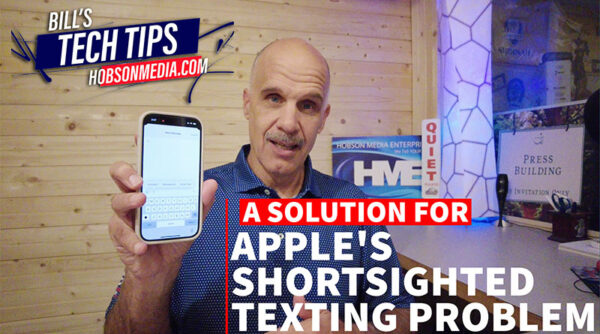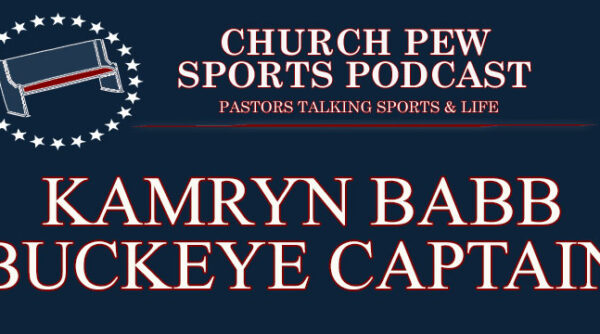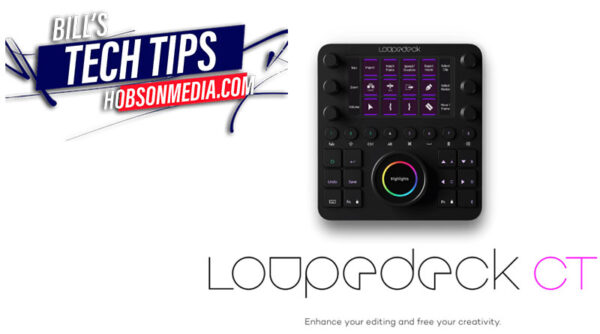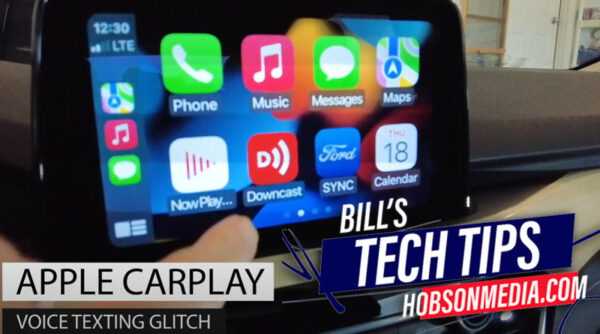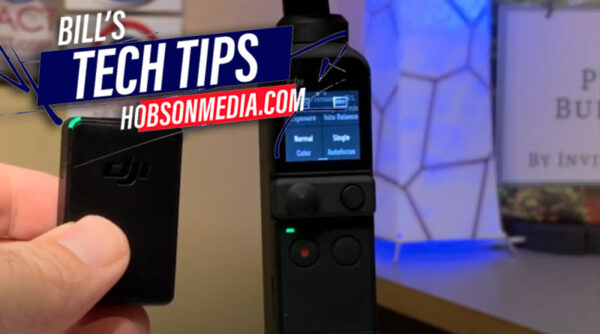 Ever heard of the “rubber chicken” circuit? It’s a commonly used term among those who are frequently involved with planning and participating in a multitude of charitable banquets. Even if you’ve not been involved behind the scenes, it’s quite likely that you’ve attended a fair share of “eat and give money” events.
Ever heard of the “rubber chicken” circuit? It’s a commonly used term among those who are frequently involved with planning and participating in a multitude of charitable banquets. Even if you’ve not been involved behind the scenes, it’s quite likely that you’ve attended a fair share of “eat and give money” events.
This form of fundraising is quite popular and for good reason – it works, when done correctly. At Hobson Media, we are often blessed with invitations to help organize, emcee, or be the keynote speaker at a wide array of benefit dinners. Over the years, we’ve tallied several million calories and been part of raising several million dollars.
Those invitations have also provided an excellent vantage point to assess the quality of an event across a wide array of criteria. We’ve had our doors blown off by complete and total excellence over the course of a full weekend event staged by Westfall Gold, and we’ve been stunningly disappointed at an event where the primary “ask” was done by a gum-chomping co-founder.
In other words, we’ve seen it all – the great, the average, and the truly poor. With that experience to draw upon, we offer the following guidance for those seeking excellence at fundraising dinners.
7 Steps To Successful Charitable Dinners
- Start and End on Time – You’ve heard this tip numerous times, and yet so many fail miserably in honoring the valuable time of your audience.The planning committee talks about it weeks in advance. Then, on the night of the dinner, it’s 7:00 p.m. and you’re nowhere close to being ready to take the stage. The audience is ready, enthused (they did choose to spend this time on your behalf), and hungry. They’re also engaged in an additional level of assessment that you never thought about.
They want to know if your organization has its act together. Are you worthy of not just a standard, comfortable gift…but can you be trusted with more?
 There are business owners and community leaders in the room. Their day jobs require efficiency and excellence. Their employees would not fare well if they showed up late or failed timely assignments. Now, those same people are noticing an event running behind and do not feel as if their time is being honored. Get started when you say you’ll start.
There are business owners and community leaders in the room. Their day jobs require efficiency and excellence. Their employees would not fare well if they showed up late or failed timely assignments. Now, those same people are noticing an event running behind and do not feel as if their time is being honored. Get started when you say you’ll start.On the other end of the evening, it’s imperative that you conclude as advertised. In every way, this event is an opportunity to demonstrate excellence, preparation, intent, and that your cause is worthy of support. Punctuality is a vital ingredient in the formula.
- Audio/Video Excellence – Production of your snazzy new video has been under way for the last 7 weeks. You just invested $5k in a speaker everyone is excited to hear. Every seat is filled. Your entire team couldn’t be more excited about the way the evening is coming together!It’s 7:00 p.m. and you’re ready to start, on time.The lights dim.
The crowd hushes.
The first thing they’re going to see is the debut of the video.
3.2.1…No audio. The video is playing. Everyone can see it. But there’s no sound. It’s a nightmare.
Your emcee scrambles to the podium with a nervous attempt at humorously deflecting the embarrassment that just launched the evening. His mic isn’t live. He taps it and begins sweating profusely.
Don’t let this happen to you. Leave nothing to chance when it comes to the visuals and sounds of your event. Don’t settle for the volunteer efforts of your Board President’s nephew’s neighbor’s friend, because you wanted to help him kick start his new DJ enterprise. Few things will derail your event more quickly than poor Audio/Video presentation.
- Your Staff Are Your Ambassadors – There are few things more mystifying than seeing members of your staff spend the 15 minutes before and after an event visiting with each other. It’s wonderful they get along and enjoy each other’s company, but it’s completely pointless if they ignore the sizable audience that donated in order to help them do their jobs more effectively.Every – EVERY – member of your staff must take full advantage of the “captive” audience that chose to come and learn more about the organization. These are the priceless moments where they can visit each table and learn names, express thanks for attending, engage in real conversation, and share a little insight into their role at the charitable cause being supported.
When the event concludes, the #1 role for the staff is NOT to clean up…it’s to engage with and thank those who attended.
Station the staff at the primary exits and for 15 minutes have them do nothing but shake hands and say “thank you for being here.” The most important legacy impact of the event is the impression each donor takes with them as they leave.
The donation envelopes left in baskets on the tables, the leftover programs and Annual Reports, those adorable centerpieces you want to use again next year? They aren’t going anywhere.
Your staff has much better things to do for 15 minutes. Don’t sprint into “cleanup” mode until your supporters have cleared the room.

- Don’t Skimp On Program – It’s entirely understandable that a firm budget needs to be set and honored for your event. If your goal is to raise $10k, it’s not wise to drop $30k to bring in a speaker everyone knows from TV appearances. Be wise, plan properly to maximize the results of the event.However, this is NOT an excuse to do things poorly just because the cost was lower. From the venue to the menu to the platform presentation, we live and engage in a culture where cheapness is easily spotted and poorly supported. Yes, donors want to know you aren’t wasting their money on air-conditioned dog houses and hot tubs in the CEO’s office.At the same time, your audience is comprised of people with wealth. They acquired that wealth through hard work and excellent performance in their lines of work.Your audience expects excellence and will support it accordingly.Feed them well. Share your story with excellence. Make sure your keynote speaker can truly move them to take action on your behalf, even if you have to spend a bit more to get the right person.
- Stories Trump Stats – Your charitable cause exists because of the lives it touches. For example, homeless shelters provide safety, vital emergency care, life-changing programs, and hope. Over the course of a year, hundreds – maybe thousands – of people come to the shelter for healing and hope. Every one of those people is valued and important. Your audience needs to see those statistics to support the idea that the shelter is in need of support, but it’s crucial that every single charitable cause remember one guiding reality:
Personal stories of changed lives will always trump the reporting of statistics. Donors will increase their giving levels if you can connect their heart to the story of a real person that their support has helped.
Yes, accountability and reporting are important. Those aspects of your Annual Report help buttress the case for support – but the emotional connection is what brings donors to a point of investment beyond a normal “clinical” level.
The best way to present a personal story at your event is through the production of a 3-4 minute video like this story we helped tell on behalf of Rescue Ministries of Mid-Michigan. Using a video to tell the story eliminates the nervous “on stage” moment for the subject, allows you to side step any unexpected comments or unscripted rambling, and keeps the evening’s program moving on schedule.
- Focus On The Donor – There is a monumental error commonly made by well-meaning organizations – focusing on what “they’ve done.”Think of it with this question: Would you rather hear about all the great things Charity ABC has accomplished, or would you prefer to hear how your gift helped change lives?The difference in these two approaches is crucial, and very easy to confuse.Let’s keep it simple.
 Your Annual Report should cover the essentials of what the operational side of the organization looks like. Be transparent, open, and share the information in a way that helps build credibility and confidence.Your event, however, will see a tremendous increase in average gift size if you can draw a clear connection between the generous support of a donor and changed lives. “Because you gave, this life was changed.”
Your Annual Report should cover the essentials of what the operational side of the organization looks like. Be transparent, open, and share the information in a way that helps build credibility and confidence.Your event, however, will see a tremendous increase in average gift size if you can draw a clear connection between the generous support of a donor and changed lives. “Because you gave, this life was changed.” - Ask Boldly, Be Specific – Your event is only going to happen once. Yes, you’ll likely have another dinner next year, but that exact crowd won’t be there. It’s a once in a lifetime moment. Make the most of it.Present your vision and needs. Put dollar handles on the need. Don’t be shy about asking for their support.If someone in the audience is shocked to learn that the primary purpose of the event is to raise funds, that’s on whomever invited them. It’s a charitable dinner, so ask with confidence and specificity.You need a new van to replace the broken down 1981 model with 400,000 miles on it? Ask for a van.
You need to replace the broken dishwasher in the kitchen? Ask for a dishwasher.
You need to hire a specialist to address a pressing need in your field of expertise? Ask for it.You’ve only got this crowd in this place for this time, once. Show them your heart, smile, and ask for their support in meeting your pressing needs.
We at Hobson Media would love to help make your event more successful. These tips are just the beginning of the process, so please don’t hesitate to reach out for a conversation!

